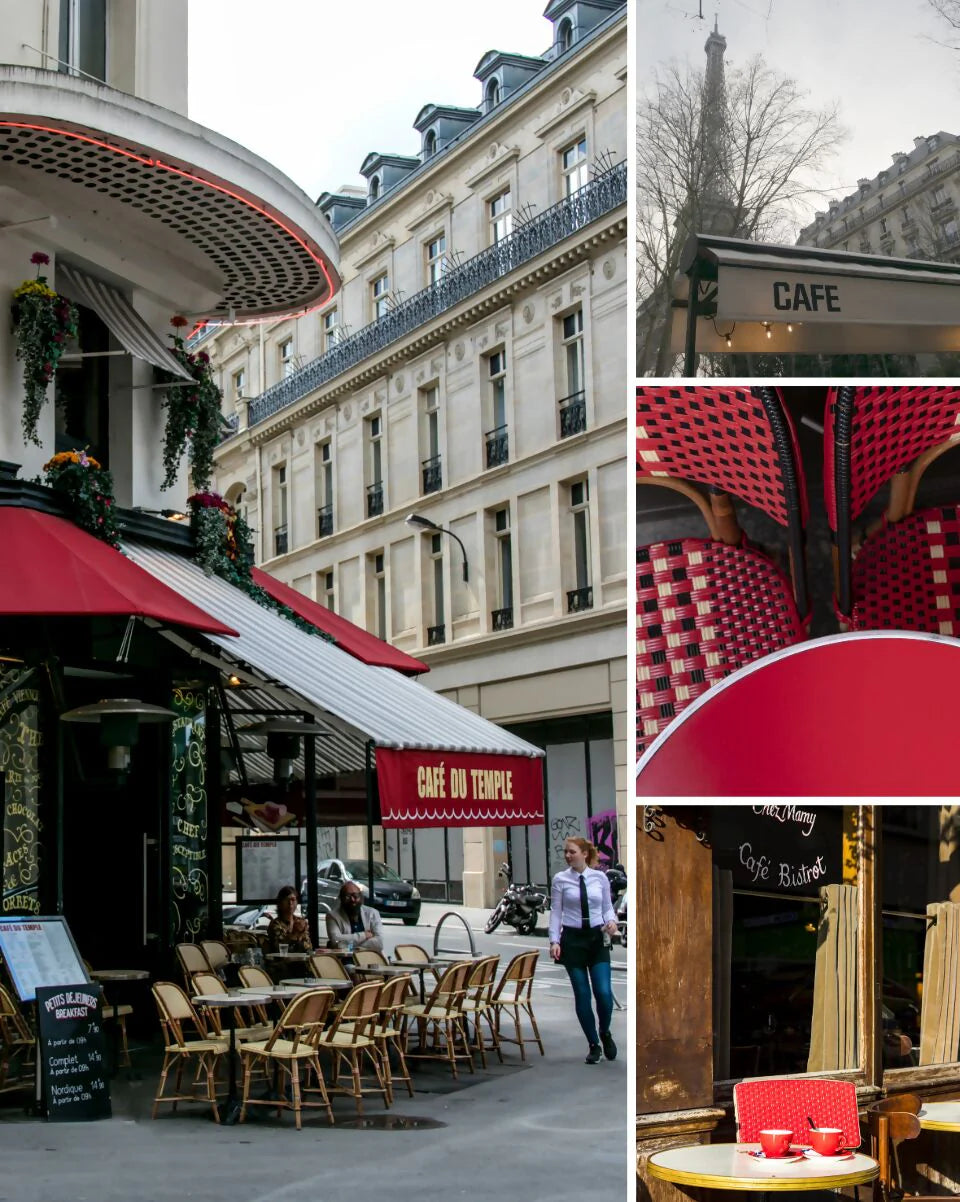Coffee Culture
Coffee Culture and the Art of French Roasting
The Birthplace of Coffee...
So what is coffee and from where does it originate? Most people don’t know that coffee is a fruit. The coffee plant, coffee arabica, is from the rubiaceae family and was first discovered by an Ethiopian shepard named Kaldi. It’s the very famous legend of the «dancing goats». Kaldi noticed that his goats were very excited after having eaten some strange red berries from a tree on the mountainside. He tasted them and discovered a sense of energy and vitality... caffeine! He brought some of the red berries to show to the monks of the monastery in a nearby village. The monks immediately threw the berries into the fire saying that it must be something «devilish». The legend says that a few minutes later, a delicious aroma filled the room. The monks removed the «forbidden fruit» from the flames and made a beverage... After drinking it, they discovered they could stay up all night and pray!
Terroirs & Varieties...
Today, coffee is cultivated in nearly 90 different countries, all of which are situated in the tropical belt. A few dozen varieties exist, most of which are hybrids of different original varieties. Along with their terroir, they will have specific growing conditions and visual attributes as well as different flavors. The Bourbon variety for example, is the original heirloom variety from Ethiopia, transplanted onto the island of Réunion (Bourbon). In the genus coffee, there is also the species canephora, most commonly known as Robusta (coffee canephora).
Unlike Robusta, Arabica can only be cultivated above 700 meters altitude and up to 2000 meters. This gives a denser and more aromatic bean. At higher altitudes, less oxygen and cooler temperatures slow down the maturation process giving the fruit more time to develop its fine aromas. On the average, a coffee tree produces around 2,5 kilos of cherries which after processing, will leave 500 grams of green coffee beans.
A delicate process..
After harvesting the coffee cherries, they must be immediately processed. Each farmer will bring their coffee cherries to the closest cooperative where they will proceed to the desired method of processing depending on origin, variety and infrastructures. The most commonly used process is «fully washed» meaning that the cherries are first de-pulped then left to ferment in tanks of water for 24 to 36 hours. This fermentation process creates a higher acidity and a very clean cup which is typical of high-grown fully-washed Arabicas.
Other methods also exist… the natural process consists of drying the harvested cherries in the sun in order to extract the precious beans. Careful sorting will be necessary afterwards in order to eliminate the pulp and parchment which envelope each single bean. With the honey process, the beans are left to dry with a layer of pulp around them giving a higher level of sugar content absorbed directly into the beans. The methods and steps of processing are numerous, all of which will have a big influence on final flavors. After processing, the cleaned coffee beans are placed in jute fiber sacs of around 60 kilos. The coffee is now ready to take on its long journey by boat to arrive in one of the many coffee consuming countries around the world.
Selection and the art of roasting...
For Cafés Richard, the coffees will arrive into European port cities such as Antwerp, Hambourg or Bordeaux. The rigorous selection process from our quality team will begin. Samples from each selected lot will be roasted and tasted using a sophisticated international notation system. Only the finest coffees will be retained for use in Cafés Richard’s roastery based in Paris.
With their knowledge in flavors from their past experience as wine producers, coffee roasting had to be at the same level with an accent on quality and aroma development… Selecting the best beans, the art of blending and respect for the fact that coffee, like grapes, is first and foremost a fruit ! Dismissing the traditional dark-roast, typical of some Italian brands, Cafés Richard distinguishes itself by creating products that maintain the flavors and natural fruitiness that an excellent coffee can offer through its unique roast profiles. The best technologies are implemented in order to roast the coffee to its ultimate aromas.
During the delicate roasting process, many changes can be observed in the beans… a change of color from green to the desired color of roast, a weight loss of 20% and an increase in volume from 50% to 70%... The coffee beans actually double in size after being roasted! It is the roasting process that is critical to aroma development and only the most experienced roasters can master it and provide consistent and excellent quality every day.
Cafés Richard uses « coffee-roast profiling » and the most sophisticated modern technologies to guarantee the best result for each blend or single origin. Slow roasting times and progressive roasting curves are used to in order to bring out the best flavors and create the perfect balance in the cup. The subtle blending of specific terroirs and a rigorously adapted roast profile are the signature of Cafés Richard’s coffees today.
Their expertise in the art of blending is synonymous to the art of French gastronomy, where its excellence is recognized worldwide.
Our know-how, your success...
To complete the picture, we train our clients in the art of making coffee in our modern and fully-equipped Académie du Café. With over 700 clients trained each year, Cafés Richard not only masters the art of selection, blending and roasting but also passes on its «savoir-faire » to each Barista that comes to our facility. Through its coffee culture courses, tasting sessions, international certifications and Barista and Latte Art trainings, the Académie du Café insures that our final customers will get that true taste of Paris, cup after cup ! A magnificent vision that Cafés Richard has perpetuated for the last 60 years… A tradition of quality, service and excellence !



Leave a comment